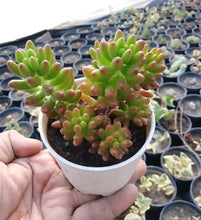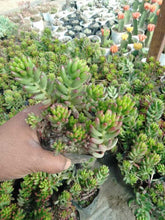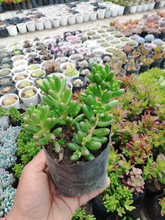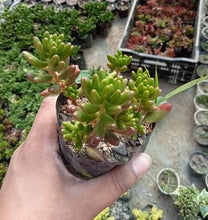- Buy Jelly Bean Succulent Plant Online :
- Sedum Rubrotinctum, commonly known as the Jelly Beans Succulent Plant,
- It is a small succulent species native to Mexico.
- It is a low-maintenance plant that is easy to care for and grows well in both indoor and outdoor settings.
Watering:
Sedum Rubrotinctum (Jelly Beans) succulents prefer a well-draining soil and should be watered sparingly. Allow the soil to dry out completely between waterings. Overwatering can lead to root rot, so it’s important to avoid excessive moisture. Water the plant thoroughly, ensuring that water reaches the roots, and then wait until the soil is dry before watering again. In general, it’s better to underwater than to overwater these succulents.
Sunlight:
Sedum Rubrotinctum (Jelly Beans) succulents require bright sunlight to thrive. Place them in a location where they can receive at least four to six hours of direct sunlight per day. You can position them near a sunny window or outdoors in a sunny spot. However, be cautious of intense afternoon sun, as it can scorch the leaves. If your succulent shows signs of sunburn, move it to a slightly shadier area.
Toxicity:
Sedum Rubrotinctum (Jelly Beans) succulents are generally considered non-toxic to humans and pets. However, it’s always a good idea to keep them out of the reach of curious pets or young children, as ingestion may still cause mild stomach upset. If you suspect that your pet has ingested part of the plant and shows any concerning symptoms, it’s best to consult a veterinarian for guidance.








